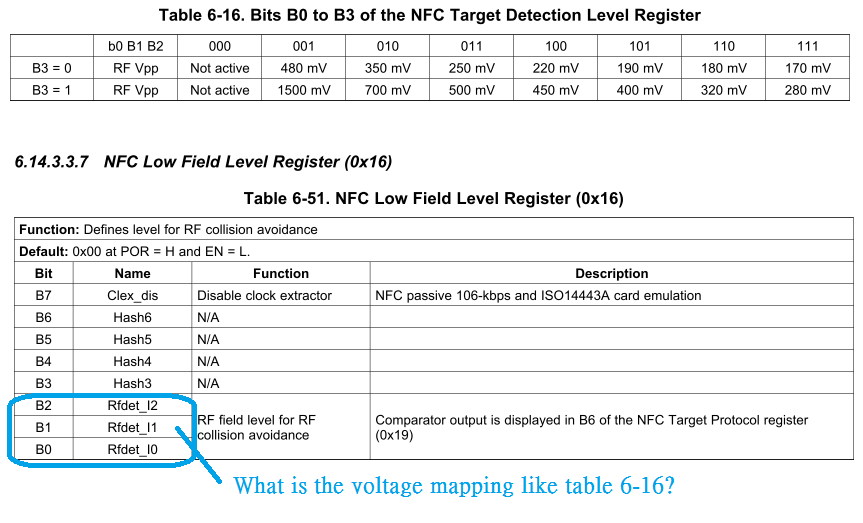Hello,
I got some error from register 0x0C IRQ status in RFCA package receive in a noisy environment. Most of errors are CRC error and some of them are collision, but these errors is not in normal data receive. So I have some questons about "CRC error" and "collision" judgement. Please see attached waveform of Rx and IRQ.
1. How does trf7970a detect collison? Is it detected from RF Rx voltage level?
I see the level setting of RF collision avoidance in register 0x16, but no mapping table of "voltage level to B0/B1/B2 setting" like below mapping for register 0x18 Rfdet_h. Please provide the collision mapping for register 0x16 Rfdet_l and I can set a higher level for non-sensitive collision detect.
2. What is the difference of CRC check between RFCA package and normal data package?
In the waveform and IRQ status, we can see there are many CRC errors in RFCA, but CRC is OK for normal data receive. Why? Is it because the different modulaiton and error correction design between RFCA and normal data package?
Thanks!




